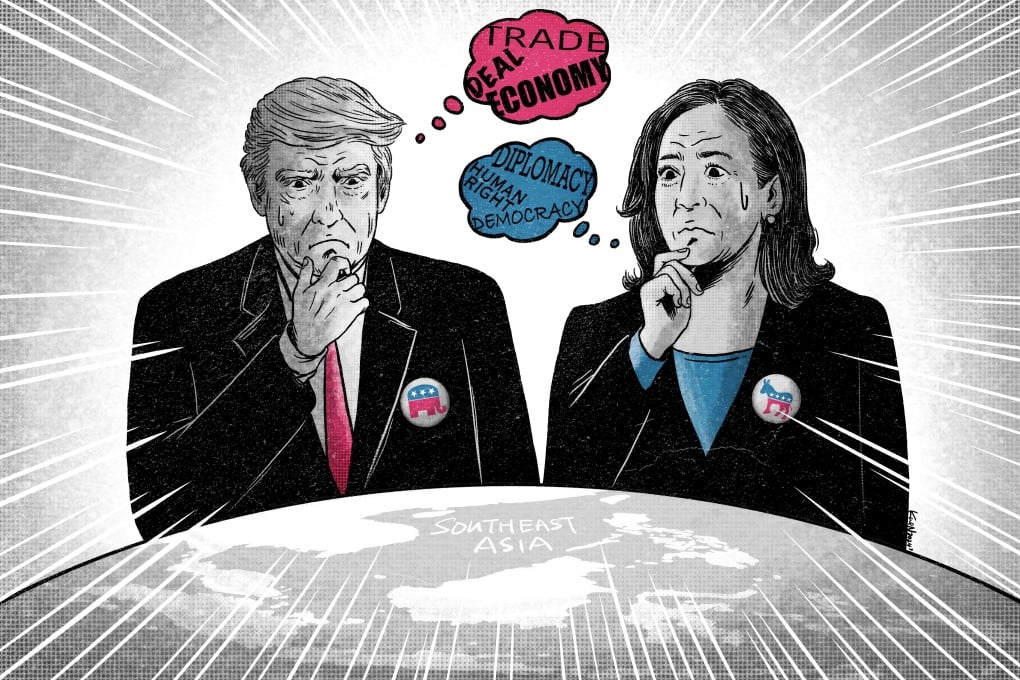Where Kamala Harris and Donald Trump are likely to diverge on Southeast Asia
US presidential candidates may have similar strategies for the region but Harris could take more ‘personal’ approach and Trump ‘more transactional’

James Downes, head of politics and public administration at Hong Kong Metropolitan University, expected a future Harris administration to continue existing policies, involving a combination of diplomacy, multilateralism and a focus on human rights and liberal democracy.
He said Trump’s approach was likely to be about the economy, with an emphasis on trade deals and security pacts that directly benefit the US.
The former president would be “more transactional” when dealing with US allies in the region including the Philippines, prioritising areas of mutual interest with less focus on human rights issues, he said.
“A security focus would also underpin a Trump 2.0 presidency, where Trump would likely prioritise security cooperation with countries in the region to counter increased Chinese economic influence and to maintain the US’ power in the wider region,” Downes said.
